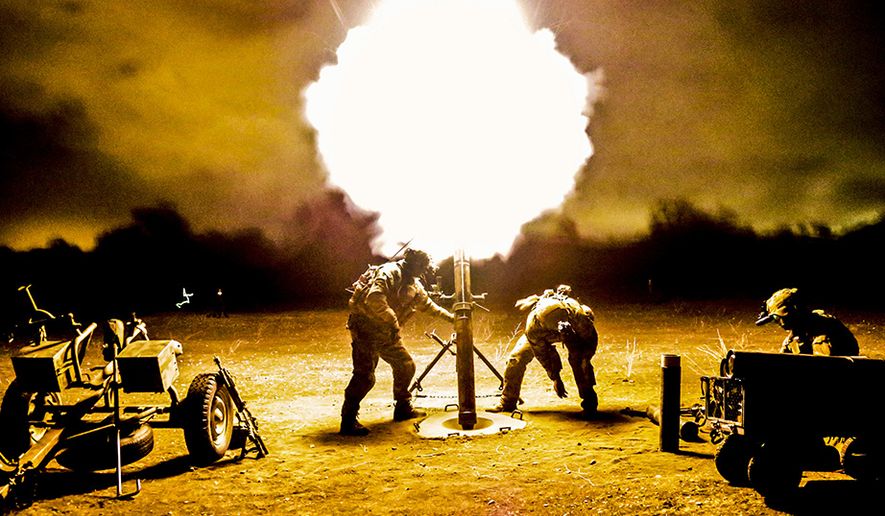The U.S. Army will hold live-fire drills about 70 miles from the Russian border over the next 10 days, Pentagon officials said as they announced another show of force on Moscow’s doorstep.
U.S. Army Europe’s 41st Field Artillery Brigade will conduct the Rail Gunner Rush drills in Tapa, Estonia, in partnership with Estonian Defense Forces. It’s the 41st Field Artillery Brigade’s first live-fire training event outside of Germany, officials said. About 70 soldiers will take part in the exercise.
While the Pentagon said the drills aren’t a direct response to any recent Russian aggression, it’s clear the U.S. military is taking calculated measures to send a message to an increasingly brazen Kremlin.
While Estonia is a NATO member, it also was directly ruled by Moscow within living memory. The small Baltic state was a republic of the Soviet Union until the Communist regime’s 1991 disintegration.
“Rail Gunner Rush will demonstrate the strong bilateral partnership between the U.S. and Estonia, and test the brigade’s deployment capabilities, readiness and interoperability with NATO allies,” U.S. Army Europe said in a statement. “This routine training exercise is not tied to any current events in the region.”
Just last week, U.S. B-52 bombers flew in close formation across all 30 NATO countries in another show of force in Europe.
The moves come against the backdrop of increased tensions with the Russian military all over the world. In Syria last week, at least four Americans were injured when their military vehicle collided with a Russian vehicle in a disputed part of the country. The two sides traded blame for the incident and said the other had breached longstanding “deconfliction protocols.”
Russia over the past six months also has routinely entered air defense zones off the coast of Alaska, drawing harsh rebukes from the Pentagon. Last Friday, Russian planes intercepted a U.S. B-52 that the Pentagon says was “conducting routine operations” over international waters of the Black Sea.
In May, U.S. and U.K. ships sailed through the Barents Sea for the first time since the Cold War. Russian forces shadowed the American and British ships during the mission, which highlighted how the waters of the Arctic have become another arena of competition between the two sides.
• Ben Wolfgang can be reached at bwolfgang@washingtontimes.com.




Please read our comment policy before commenting.